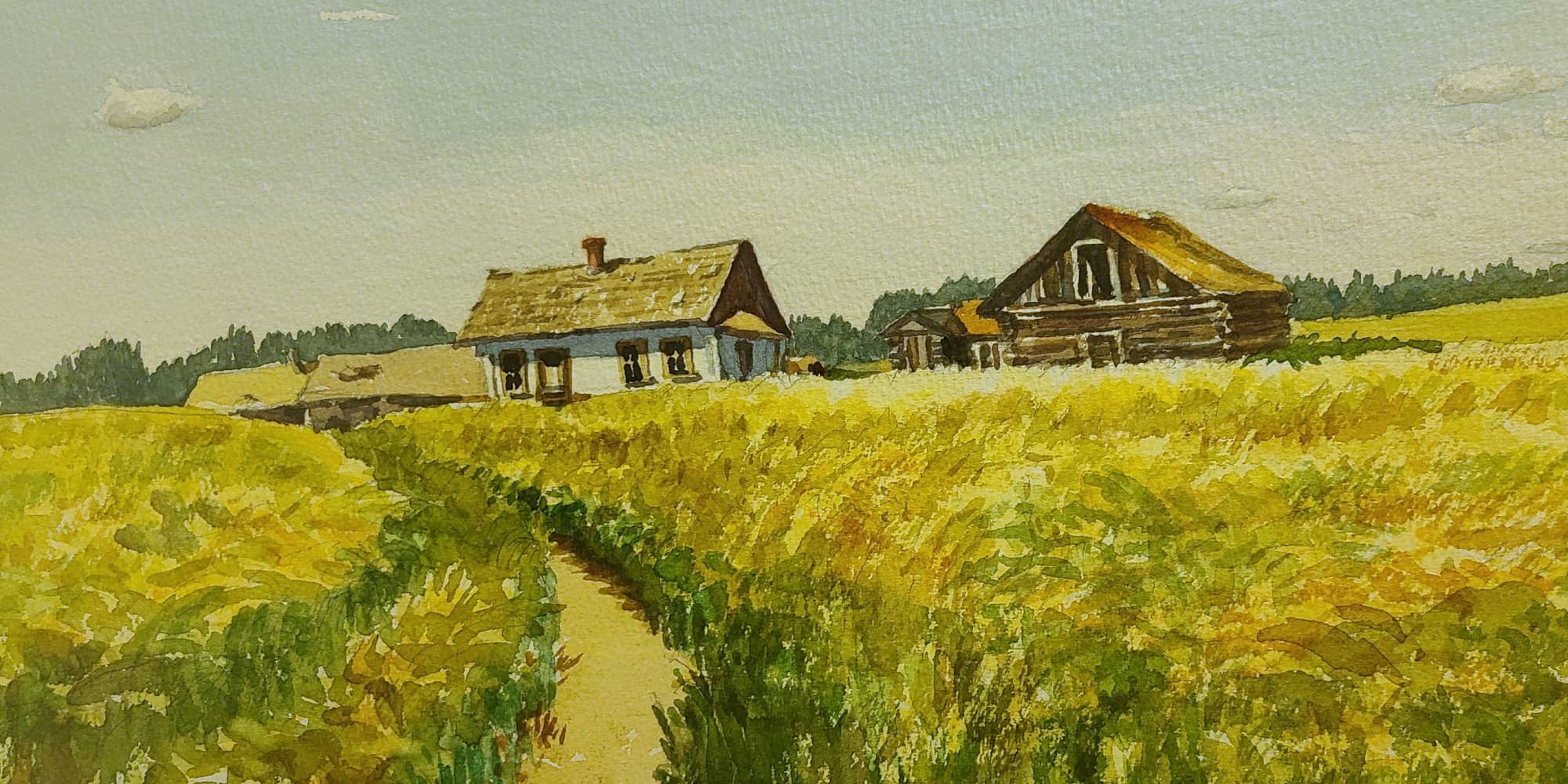-
History of Volchansky family
Andriy Volchansky was one of the Ukrainian pioneers in Canada, and like most of them, he was a farmer. The 1930s photos in this collage contrast with 1957’s tractor-cutting photo, showcasing the rapid evolution of farming methods due to technological advancements in agriculture.
Andriy Volchansky, born in 1894 in western Ukraine, was part of the Ukrainian Sich Riflemen. During World War One, Austria took the Sich into its army, including Volchansky. After most of his unit was killed in combat, Volchansky and a few survivors were driven to Kyiv, where they worked hard until 1918. He joined the Ukrainian People’s Army in Austria but was injured. When the Polish army launched a strong offensive against the young Ukrainian army, he was in Stry. In 1925, he left for Canada, where he worked various jobs, purchased a farm 18 miles from the town of Athabasca, and built a People’s House and Ukrainian Orthodox church. He retired in 1958 and moved to Edmonton, where he and his wife Kateryna became members of St. John Cathedral.
-
Breadpan
The breadpan used for kneading and preparing dough. In Ukrainian, it is called a koryto or netsky.
-
Dough Pan
This early 20th century metal dough pan was utilized for the rising of dough. It doubled as a dish basin.
-
Butter Churn
This is a type of butter churn that was common in many countries from the late 18th century to the early 20th century.
-
Sieve
This winnowing sieve (resheto) was used to separate the grain from the chaff by shaking the contents up and down and allowing the chaff to blow away in the wind.
-
Wool Carder
This tool is a wool carder used to comb the wool, smoothing the wool to help straighten it to prepare it for spinning into yarn.
-
Tall Butter Churn
This tall butter churn (maslynka) was made in 1930.
-
Scythe
This agricultural tool is a scythe (kosa) that was used for cutting hay.
-
Pioneer Artifacts



